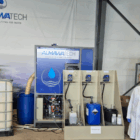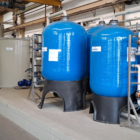Wastewater technology encompasses all technical measures and processes for the collection, discharge, treatment and recycling of wastewater. This primarily involves the treatment of wastewater, rainwater and industrial wastewater that is contaminated with organic, inorganic and chemical substances. In industrial wastewater treatment, wastewater technology is of central importance in order to comply with legal requirements for discharge into bodies of water or reuse in the production cycle.
The aim of wastewater technology is to treat wastewater in such a way that it can be returned to the water cycle without harming the environment or technical systems. It is an important part of environmental protection and ensures compliance with quality standards for the treated water.
Table of contents
Technical background of wastewater technology
Wastewater treatment plants rely on a variety of mechanical, biological, chemical-physical, membrane and thermal processes to purify wastewater. These processes are used depending on the type of contamination and the local conditions. The most important steps in wastewater technology are
1. mechanical wastewater treatment
Here, coarse solids are removed from the wastewater. The mechanical processes include
- Screening systems: They remove larger particles such as wood, plastic and other coarse materials.
- Sand and grease separators: Sand, grease and oil are separated in these separators.
- Settling basin: The sludge settles in these basins due to gravity.
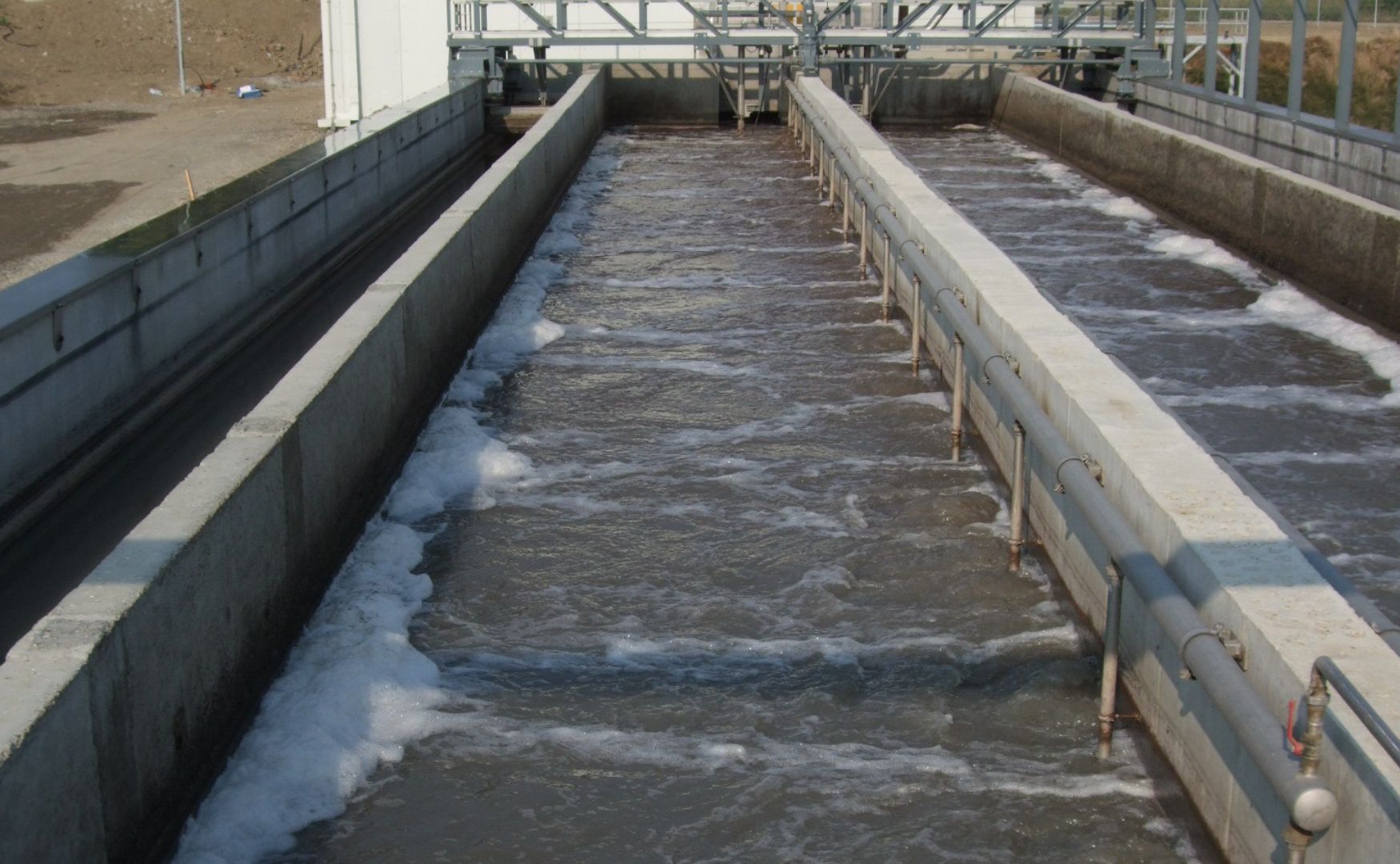
Photo: Example of an aerated grit chamber that removes sedimenting coarse solids as well as floating and fatty substances. The system is part of the pre-treatment of our ALMA BHU BIO system
2. biological wastewater treatment
In biological treatment, microorganisms are used to break down organic substances in wastewater. There are various biological processes:
- Activated sludge process: The wastewater is mixed with aerated sludge containing microorganisms. These break down the organic substances.
- Membrane bioreactors (MBR): In these reactors, biological purification is combined with membrane filtration, which removes particularly fine particles and micropollutants.
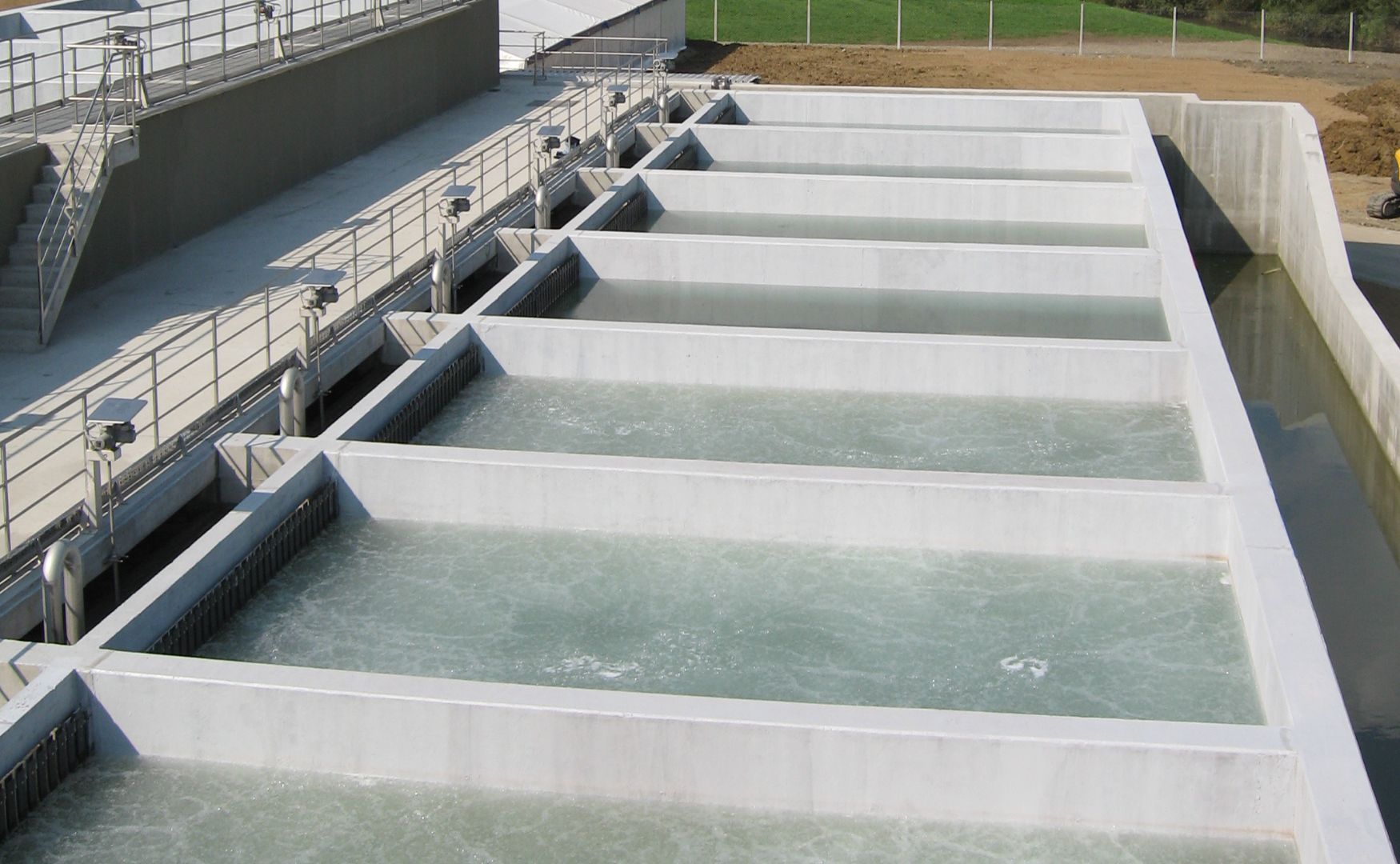
Photo: Photo of our biologically activated filtration, a combination process of mechanical cleaning and biodegradation(ALMA BHU BAF)
3. chemical-physical wastewater treatment
These processes are used when certain substances cannot be removed by mechanical or biological methods. These include
- Precipitation and flocculation: By using chemicals such as iron or aluminum compounds, dissolved substances are converted into solid particles, which can then be flocculated and separated.
- Neutralization: Wastewater with an extreme pH value (acidic or alkaline) is neutralized by adding acids or bases.
- Oxidation: Here, heavily contaminated wastewater is treated with oxidizing agents (e.g. ozone or hydrogen peroxide) to destroy harmful organic compounds. Processes such as the Fenton process use this technology.
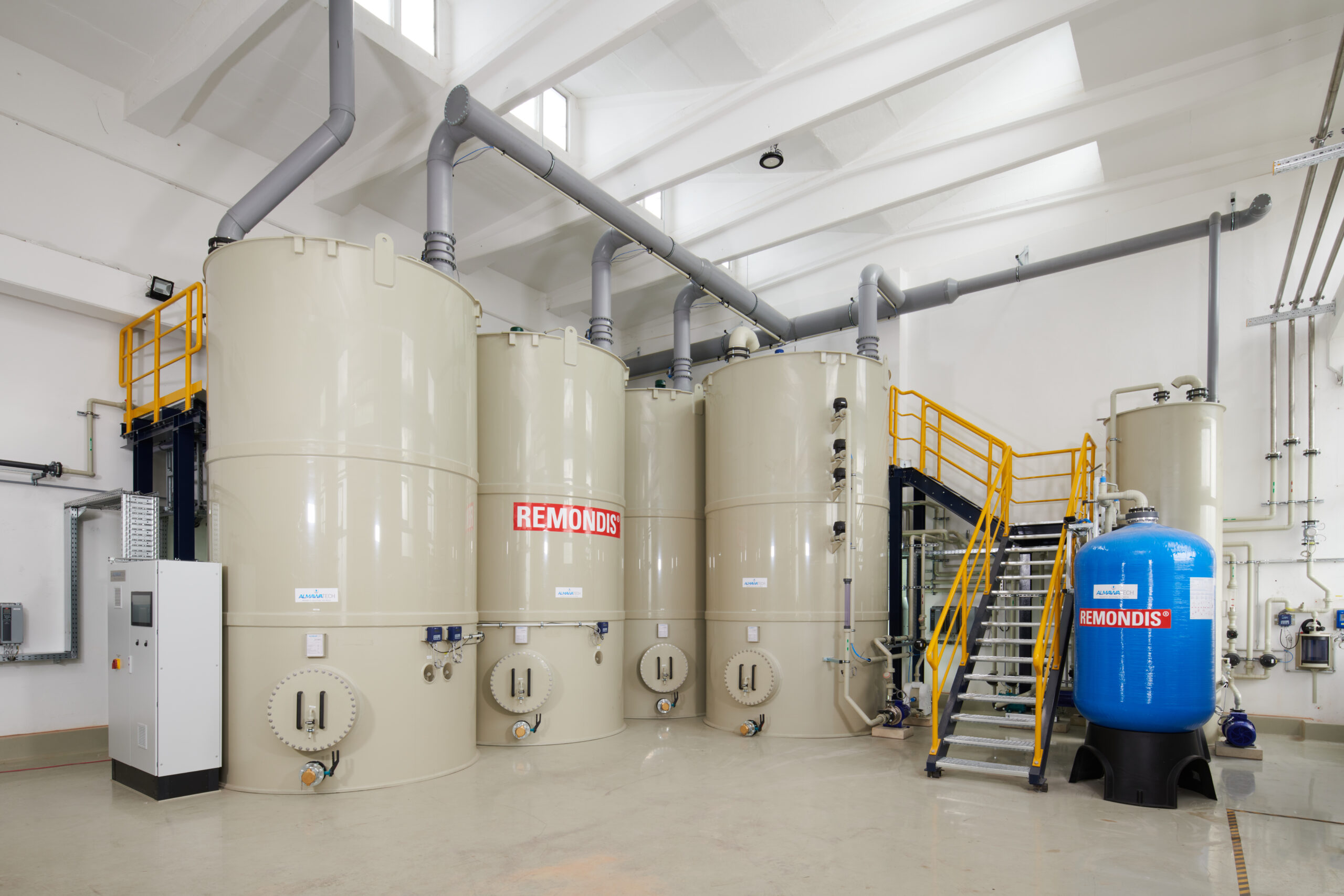
Photo: Example of a CP system for the removal of heavy metals, AOX and hydrocarbons(ALMA CHEM MCW)
4. membrane process
Membrane processes are playing an increasingly important role in advanced wastewater treatment, especially when it comes to the removal of very fine particles and dissolved substances.
- Microfiltration and ultrafiltration: These processes filter larger particles such as bacteria, suspended solids or colloids from the wastewater. The membranes have pores of different sizes in order to filter out specific substances.
- Nanofiltration (NF): Dissolved substances such as heavy metals or organic compounds are removed here. Nanofiltration works with finer pores than microfiltration and ultrafiltration, which means that even smaller particles are filtered out of the wastewater.
- Reverse osmosis (RO): A particularly effective process for removing dissolved salts, heavy metals and other fine particles. Reverse osmosis uses high pressure to force water through a semi-permeable membrane, which retains the dissolved substances. Reverse osmosis systems are often used to achieve extremely high water qualities, for example for water recycling in industries with high water consumption.
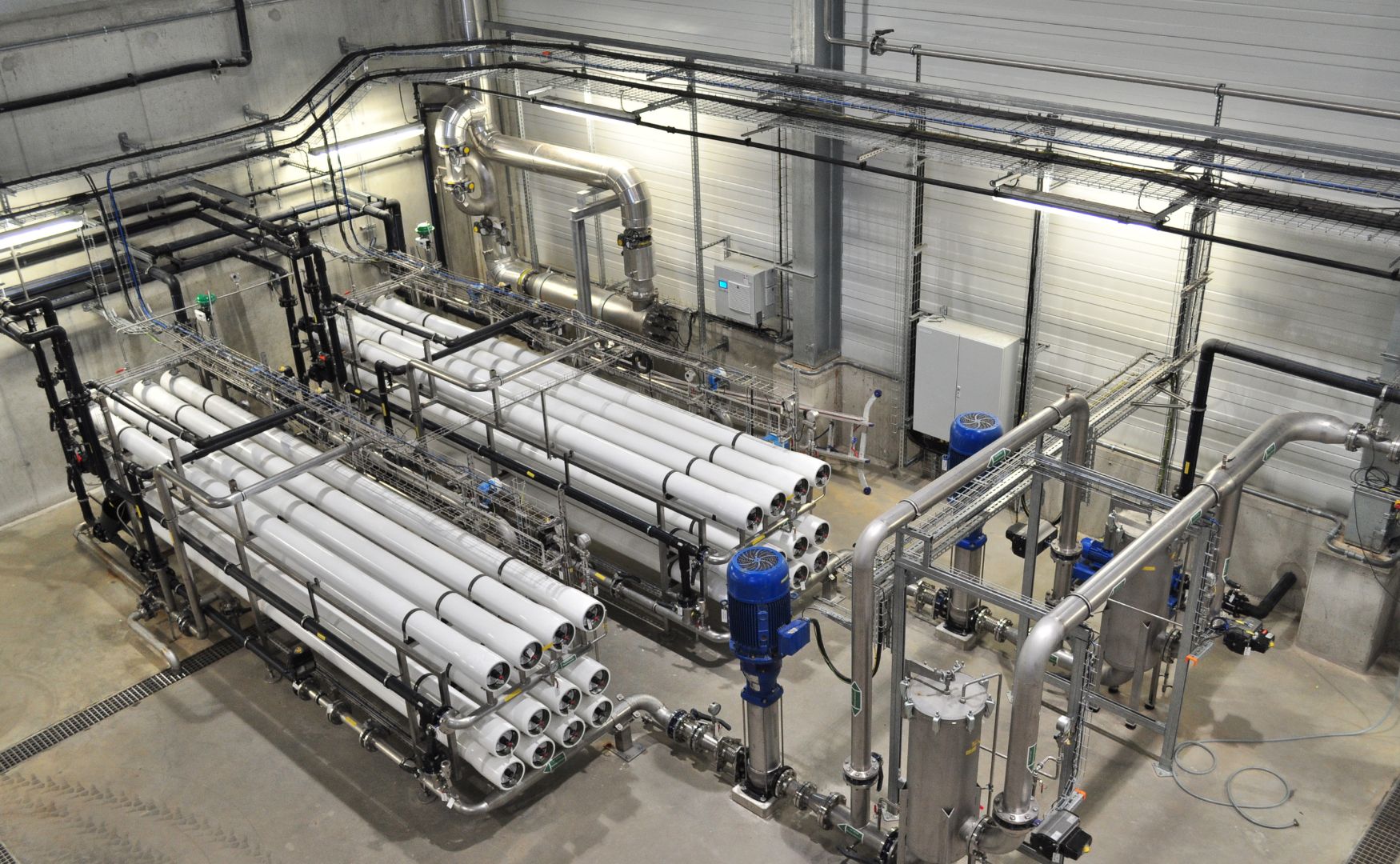
Photo: Example of one of our reverse osmosis systems for the production of process water from wastewater(ALMA BHU BiosS-Treat)
5. thermal processes
These processes are used when organic pollutants are present in wastewater that cannot be completely degraded by other methods. These include
- Incineration processes for sludge reduction or
- Evaporation to purify the water and treat concentrated residues.
Wastewater technology in industrial practice
In industrial water treatment, wastewater technology is adapted to the specific requirements of each industry. Industries such as chemicals, food and beverage production, metal processing and the paper industry have different types of wastewater, each of which requires special technologies and treatment processes.
Examples of application in practice:
Food industry: In milk processing or beverage production, wastewater containing fat and protein is produced that requires both biological and chemical-physical treatment. Fat separators, activated sludge processes and membrane systems are used here.
Chemical industry: Toxic and poorly degradable substances often occur here. In addition to precipitation and flocculation, the Fenton process is often used to oxidize organic pollutants.
Pulp and paper industry: These industries require large quantities of water and often rely on recycled water treatment plants. In addition to biological systems to remove organic substances, chemical processes are also used to treat fiber residues and deposits such as calcium carbonate.
Advanced technologies in wastewater technology
With the growing awareness of sustainability and resource conservation, advanced processes such as membrane filtration, Advanced Oxidation Processes (AOPs) and the reuse of water (water reuse) are becoming increasingly important. These technologies enable further purification of wastewater so that the purified water can either be fed back into the production process or reused directly. This is particularly relevant in industries that require large quantities of water, such as the paper industry.
The challenges of wastewater technology
Wastewater technology faces the challenge of combining technical progress with ecological requirements. The greatest challenges include
- Increasing water treatment standards: Stricter legal requirements and limits for the discharge of treated wastewater demand ever more efficient technologies.
- Cost control: The implementation of new technologies for wastewater minimization and water reuse must be economically viable.
- Diversity of pollutants: The large number of chemicals and contaminants in industrial wastewater requires specific and often complex treatment processes.
Conclusion
Wastewater technology is a central component of industrial environmental protection. It ensures that wastewater is treated effectively and meets both legal requirements and operational needs. Through the use of advanced technologies such as membrane processes, biological wastewater treatment and precipitation and flocculation plants (CP plants), wastewater technology makes an important contribution to conserving water resources and protecting the environment.
For further information on our products, please feel free to contact us at any time!




